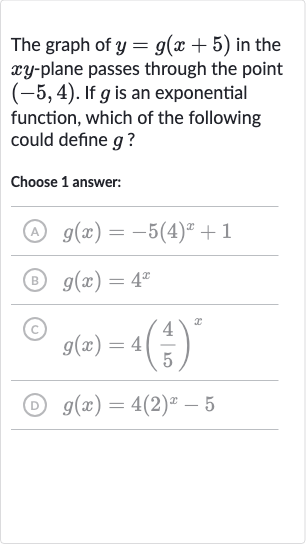Full solution
Q. The graph of in the -plane passes through the point . If is an exponential function, which of the following could define ?Choose answer:(A) (B) (C) (D)
- Substitute : To find the correct function , we need to substitute into the equation and check which option gives .
- Option (A): For option (A), , we substitute (since ) to get , which does not equal .
- Option (B): For option (B), , we substitute (since ) to get , which does not equal .
- Option (C): For option (C), , we substitute (since ) to get , which equals .
- Option (D): For option (D), , we substitute (since ) to get , which does not equal .
More problems from Write equations of cosine functions using properties
QuestionGet tutor help
QuestionGet tutor help
QuestionGet tutor help
QuestionGet tutor help
QuestionGet tutor help
QuestionGet tutor help
QuestionGet tutor help
QuestionGet tutor help
QuestionGet tutor help

